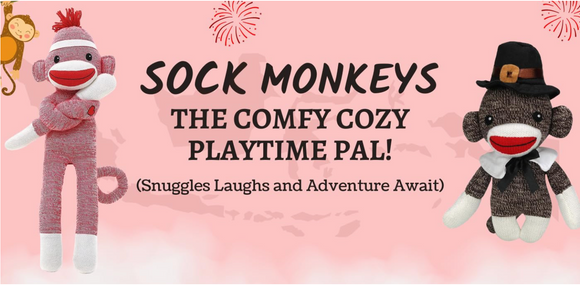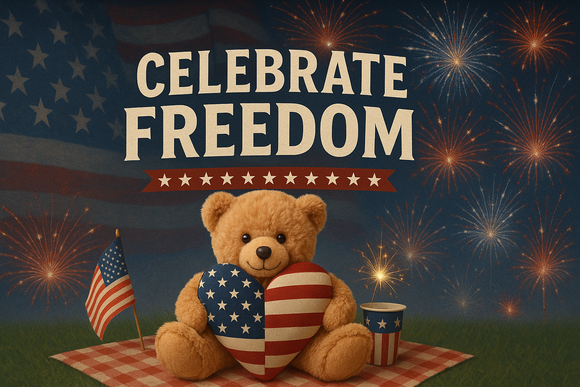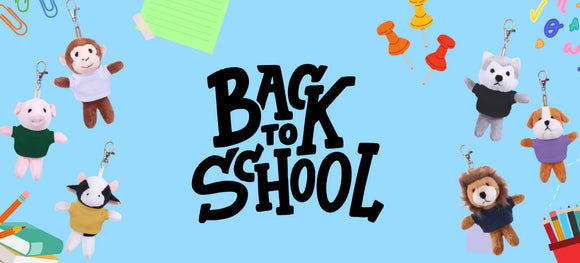
Softer than Soft: Why Plush Bears Are The Coziest Stuffed Animals In The World
Ashok Kohli
Topics
- What is a stuffed animal?
- You Want Your Stuffed Animal To Be Made of a Plush
- What is Plush?
- A Brief History of Plush Bears
- Where do Stuffed Animals come from?
What is a stuffed animal?
For most people, a stuffed animal is just a stuffed animal. They are all pretty similar. Their fur warms you when it’s cold out. Your child’s imagination brings them alive.
But some stuffed animals are far superior than others.
That’s more fact than opinion.
This is because these better stuffed animals are made of premium material. It’s more nature-friendly, much softer to the touch, irresistible to children, and more hygenic.
This material is known as long pile plush.
“Long pile” means that the material sort of sticks out from the surface.
Believe it or not, you probably have a lot of long pile in your house right now. Examples include your carpets, and anything made of velvet, or corduroy.
The word “pile” is used because it comes from the Latin pilus which means hair. That’s because these fabrics feel a little bit like tiny hairs sticking out from a surface.
But unlike all those other long-pile fabrics, plush is unbelievably soft. You have felt it if you’ve ever touched a premium stuffed animal. It’s completely unlike the “classic” teddy bear.

You Want Your Stuffed Animal To Be Made of a Plush
Little kids love to press plush animals to their cheeks. They can’t believe how soft it is.
There is no good reason to pick boring old non-plush bears.
Plush bears are NOT more expensive. You can typically find both at the same price points.
There is only one reason why companies continue to mass produce non-plush animals: it’s cheaper for them.
They save on production costs but still charge you exactly the same price high-quality companies do.
The non-plush materials are synthetic. They’ve been around for almost a century. While they have many downsides, it’s very easy to mass produce them. The materials can be found anywhere and are easy to acquire.
Non-plush animals are not soft and are terrible for the environment... but they are cheap. So companies still put them into stores.
OK! So that’s the theory. Let’s put it into practice: Which do you think looks cozier?
First: look at this poor bear. He looks like he’s hibernating and having the time of his life. But look at his skin! It’s so plain. It looks like the same material you find on a dress shirt. Or on a backpack... or an old sofa! Not the type of stuff that makes you feel comfortable when it’s freezing outside.
Now compare that poor sofa-skinned-bear to this guy...
Look at all that plush! Not the frizzy hair on top of his head, but the magnificent hug-deserving “feathers” that cover his entire body. He looks so huggable. He looks so cute. His furry skin makes you want to buy him this second.
What is Plush?
Those little “hairs” are made possible through fabric that has been tied into a knot. Part of it is stuck in the “skin” that’s under the “feathers.” The rest of the fabric has been strategically left out of his “skin” to make this owl fuzzy, cute, and softer than a baby’s skin.
The whole thing is possible because of a special weaving technique. From the very second the fabric is created, it’s left like this to make it plushy.
The “hair” is the easiest way to tell whether or not an animal is made of plush. The little “feathers” or “hairs” show you whether a stuffed animal is huggable-enough to deserve a spot in your home.

A Brief History of Plush Bears
Stuffed animals have been around since the Romans. From then, up until the 19th century, they were pretty creepy looking. These earlier stuffed animals were simply known as “rag dolls.” They were made of different little bits of cloth and rags that were just lying around. That’s where the name comes from. It was more of a creative project, and less of an art and industry. Then, in the late 1800s, a German company started making stuffed animals out of softer materials. They moved away from using rags to upholstery -- the same stuff your sofa is probably made of.
This might sound like a super unimportant detail... but at the time it was a HUGE deal. A fluffy revolution. No one had ever thought of dedicating high quality materials to stuffed animals. They now looked like real toys, instead of creepy dolls made from leftover materials... The new stuffed animals became extremely popular in Germany.
The new upholstery bear were made of a fabric similar to what this sock monkey is made of. It isn’t as soft as plush, but it’s a HUGE step up from rags.
Where do Stuffed Animals come from?
In the same year, a company in the united states started making what would become one of the most popular stuffed animals of time. A toy so popular that even though it was invented in 1903, it’s still around to this day...the teddy bear. It was one of the first truly popular “fad” toys. It swept the nation. Every little boy and girl had to have one. The impact was so massive because they were made of an early form of plush. It’s nowhere near as soft as plush is today. It’s kind of frizzy and feels a little like a carpet but is much, much softer.
The 20th century
Over 100 years have passed since the first teddy bear was sold. Ever since then stuffed animals have become a fundamental part of the world. You cannot travel anywhere without seeing stuffed animals in casual market stands or in dedicated mall stores. Plush bears have continued to gotten softer. Better weaving techniques have allowed ultra-soft bears to be produced in larger quantities, when before it would take extremely long to make just one bear. Non-plush bears are still out there. But they are still rough to the touch, worse for the environment, and more difficult to squeeze.
So when you do get a stuffed animal make sure it has the distinctive “hairs” which make up it’s fake fur. If you can really feel each one then you know you have a perfect match.



